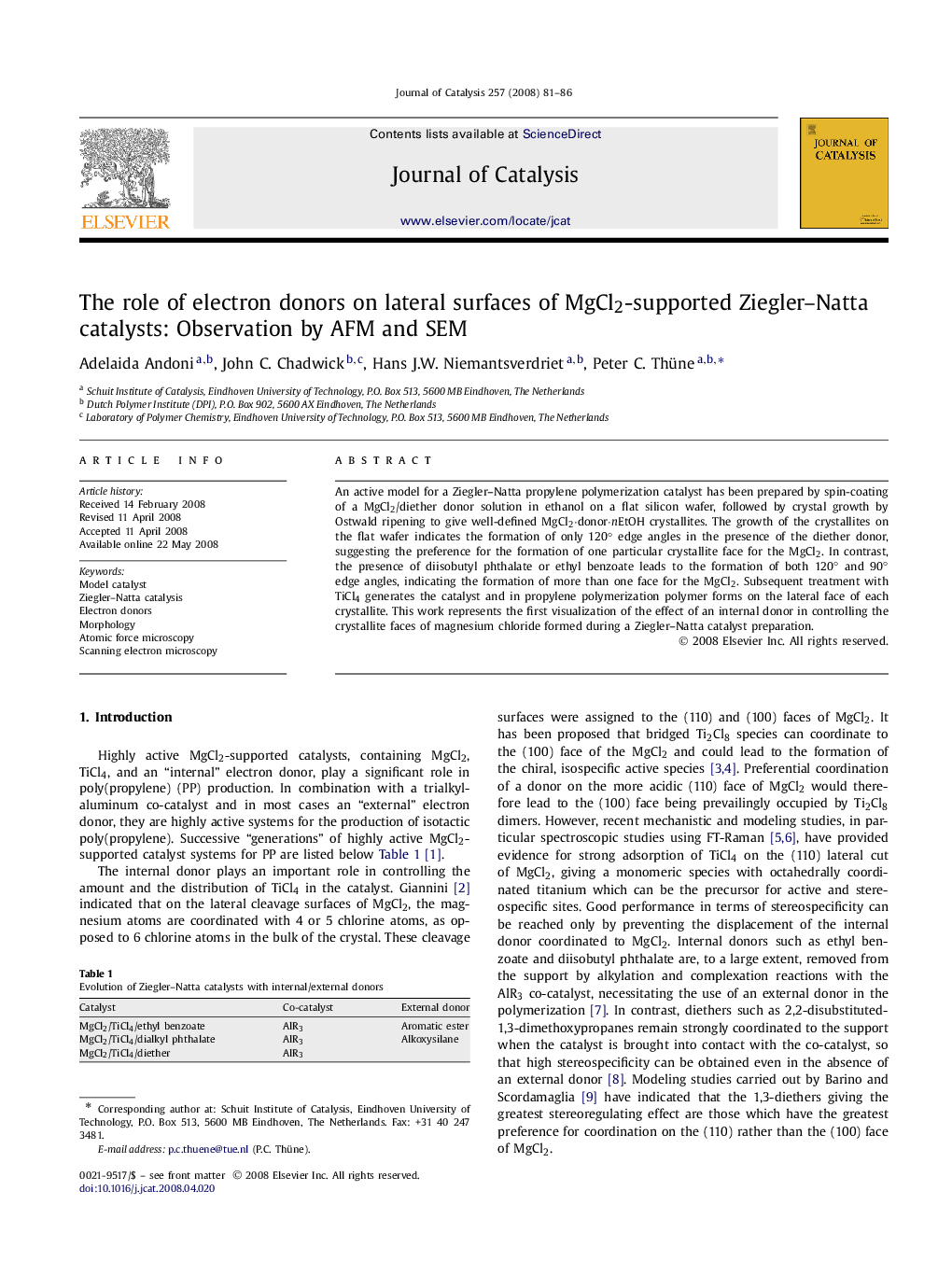| Article ID | Journal | Published Year | Pages | File Type |
|---|---|---|---|---|
| 62423 | Journal of Catalysis | 2008 | 6 Pages |
An active model for a Ziegler–Natta propylene polymerization catalyst has been prepared by spin-coating of a MgCl2/diether donor solution in ethanol on a flat silicon wafer, followed by crystal growth by Ostwald ripening to give well-defined MgCl2⋅donor⋅nEtOH crystallites. The growth of the crystallites on the flat wafer indicates the formation of only 120° edge angles in the presence of the diether donor, suggesting the preference for the formation of one particular crystallite face for the MgCl2. In contrast, the presence of diisobutyl phthalate or ethyl benzoate leads to the formation of both 120° and 90° edge angles, indicating the formation of more than one face for the MgCl2. Subsequent treatment with TiCl4 generates the catalyst and in propylene polymerization polymer forms on the lateral face of each crystallite. This work represents the first visualization of the effect of an internal donor in controlling the crystallite faces of magnesium chloride formed during a Ziegler–Natta catalyst preparation.
